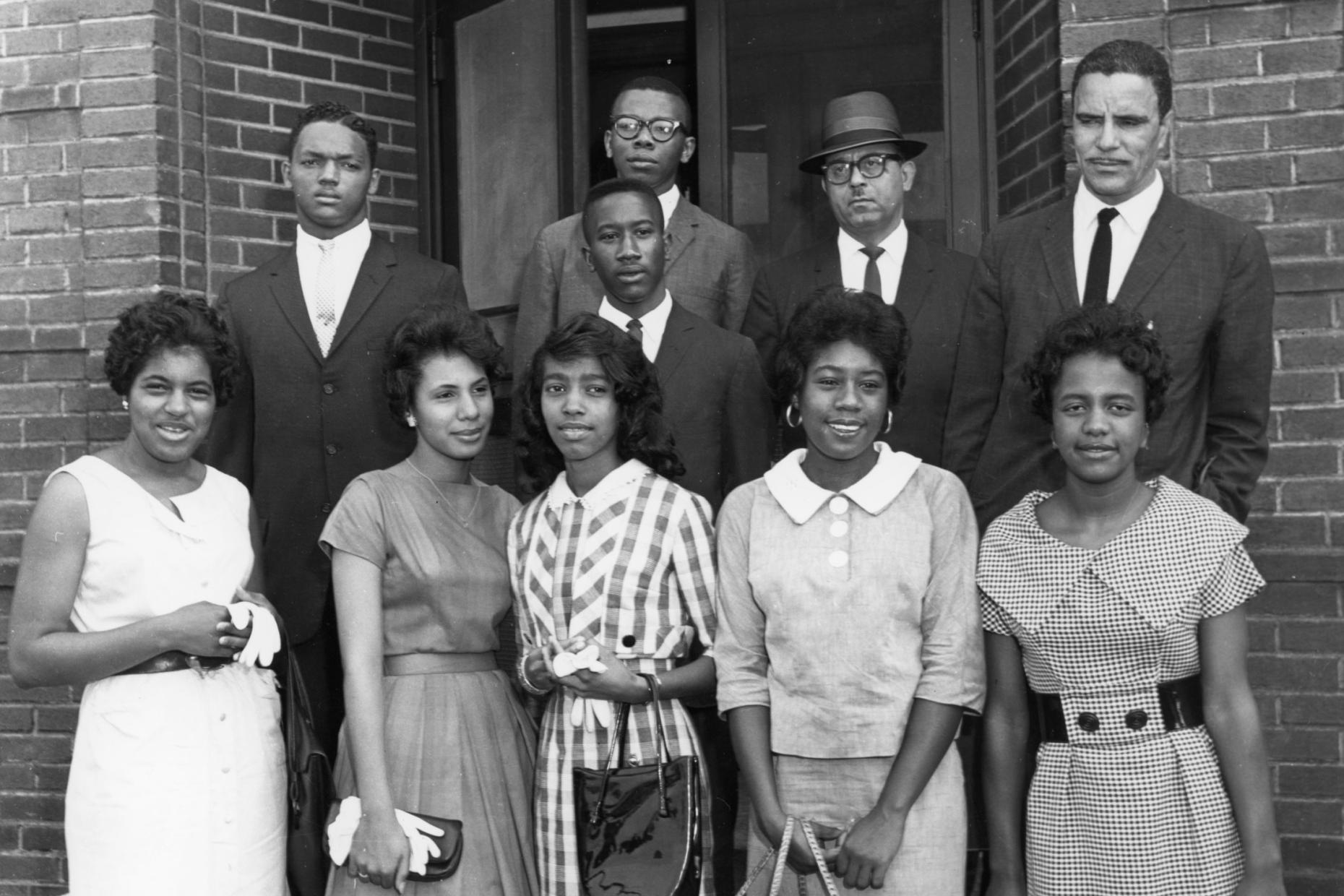The Greenville (South Carolina) Library Desegregation Crisis involved eight African American students who protested the segregated library system in Greenville, South Carolina, from March 1, 1960, to September 9, 1960. The eight students included future civil rights leader and presidential candidate Jesse Jackson, Dorris Wright, Hattie Smith Wright, Elaine Means, Willie Joe Wright, Benjamin Downs, Margaree Seawright Crosby, and Joan Mattison Daniel.
Jackson, a Greenville native and freshman college student at the University of Illinois, was back in Greenville, South Carolina, for Christmas break in December 1959. While in Greenville, Jackson needed a book to write a college research paper. The book Jackson needed was unavailable at the colored library branch, a one-room, dilapidated house on East McBee Avenue. The Librarian at the colored library branch wrote a note and told Jackson to visit the White-only branch of Greenville Public Library, where the book was located. Jackson then went to Greenville Public Library and gave the Librarian the note. Although the book was visible on the shelf inside, the Librarian told Jackson that he had to wait six days before he could use it. Jackson pleaded with the Librarian, but policemen who were present told him, “You heard what she said.” Jackson then left the library upset.
Three months later, on March 1, 1960, twenty Black high school students entered Greenville Public Library and attempted to utilize the facility. In response, library officials closed it for the day. Two weeks later, seven students returned to the library to protest the segregation policies, and they were arrested for disorderly conduct. The charges were dismissed, however, before they would have stood trial.
Four months later, on July 14, 1960, Jackson and five other students stood on the steps of the library. They remained on the steps until police arrived and threatened them with arrest if they entered the building. The protestors then left. Two days later, on July 16, 1960, Jackson and seven high school students from Sterling High School entered the Greenville Public Library. They would be known as the Greenville Eight. The eight students silently browsed the shelves and sat down to read. Several whites at the library left after seeing the students there. A Librarian instructed the students to go, but when they refused, the police were called, and they arrested the students for disorderly conduct.
Donald J. Sampson, the first African American lawyer in Greenville, South Carolina, arrived after the students were jailed. He persuaded the court to release the students on a $30 bond. Ten days later, on July 26, 1960, Sampson filed a federal lawsuit in the United States District Court for the Western District of South Carolina, arguing that the students were denied their right to use a publicly funded facility.
U.S. District Court Judge Charles Cecil Wyche ruled that the students had the right to use the public library. On September 19, 1960, the city quietly reopened all public libraries in Greenville including the Greenville Public Library which would from that point be desegregated.


